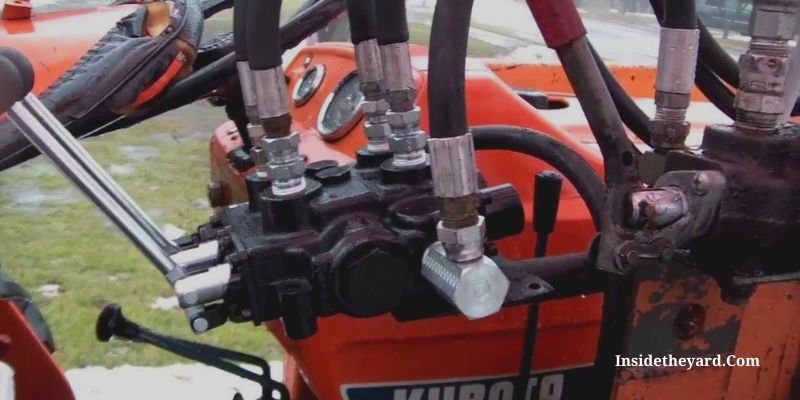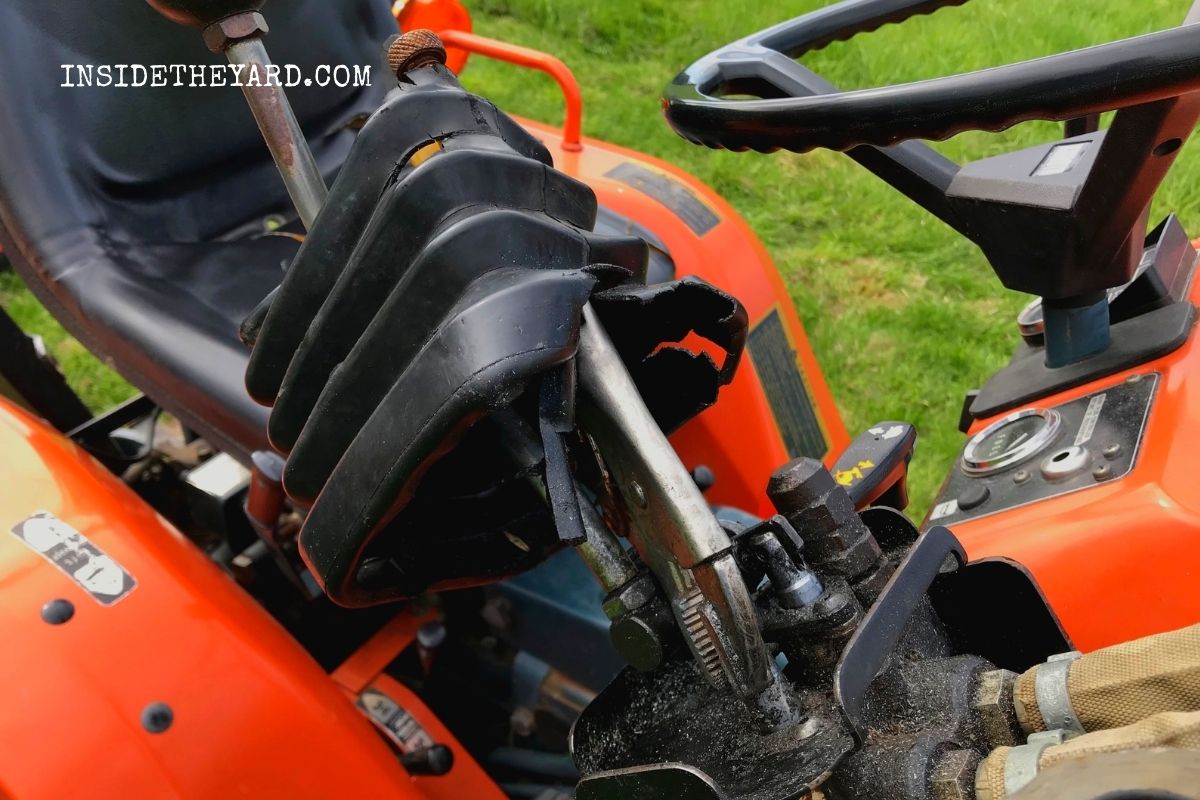Call it a loader valve, load-holding valve, or a counterbalancing element. These are super essential parts of a mobile system that won’t change.
The design might be simple enough of these valves to make you think there’s not much they do for the entire mechanism. But no, the opposite is true! Because load holding, controlling and safe handlings are not simple tasks, which are the key jobs of this simple-to-look element.
And sometimes, even the most mechanically inclined person fails to understand the application.
Today let’s give you the much asked for Kubota loader valve diagram along with a great resource on this vital part. Hope It Helps!
Understanding The Kubota Loader Valve Diagram

If looking at the picture, it still seems unclear due to the lack of details. And to fill the gaps, we’ll start discussing each part.
A Refers to Loader Control Valve
This mostly flows fluid into the moving and heavily used parts like hydraulic cylinders or motors to keep the tractor working smoothly with no friction.
Any folk who asks what is a Kubota loader valve should know it’s a direct functioning valve that helps fluid flow inside the components.
Since the loader moves in an up and down motion, this part needs a lot of pressure to work through the pilot line. To keep the mechanism hot and smooth, the loader control valve lets the Kubota run fine.
B Refers to Power Beyond Port
The part offers pressure (hydraulic flow) to the specific port which you can see in the illustration. This might seem a bit confusing since the remote valve is present right beside the power beyond port.
To put it simply, the loader would run with the power beyond port instead of the remote valve on the tractor.
Meaning that you will insert the supply line of the loader valve in the power beyond port so that it can flow the specific amount of pressure (PSI). And, the good thing is your remote valve can perform freely for other usages.
In some of the loader valves of tractors (including Kubota), you’ll see a ‘PB’ label which indicates the power beyond port is right next to the stamp. To locate this part, check for any green tape or mark on the hose which is the power beyond port.
C Refers to Tank Port
In the Kubota tractor, the part is attached to the loader valve. Without this, the loader valve can’t be pressurized. It basically works the same as a power beyond port.
If described in detail, the tank port fits on the PB AKA power beyond port in the tractor so that the hydraulic pressure flow rapidly.
D Refers to Hose
This stands right above the 2 big hoses. It looks black and helps the fluid to transfer in specific directions. And, the Kubota uses a solid and flexible hose.
E Refers To Large Hose
In the picture, this part is on 2 sides using special piping to attach to the loader valve. One hose is right below the pump port (left side) while another one stays under power beyond port.
F Refers To Pump Port
This part fits the power beyond port inside the loader valve when the tank port connects to the PB port. It looks like a small nut but helps a lot to pressurize the valve.
Bucket Malfunctions – Goes Up Instead of Lowering

Let’s explore one of the common Kubota loader valve issues. And it’s something like so, you try to push the joystick lightly for lowering the bucket but it goes up instead. In some cases, a hard push might make the bucket lower. But the speed is unusual. Also, there could be a weird jerk or bounce that basically shakes the whole tractor.
Now, this could be due to a reversed hose. This means the valve has been put in float when you push the lever a bit too hard. So, gravity causes it to go downwards. You can try switching quick connect hoses for the valve.
Also, one strong probable reason behind the problem could be having backpressure. You should also try checking the 3pt lever and know if it’s in neutral. Also, look at all the quick disconnectors as well as make sure the hose connections are done right.
Now you might also want to consider the loader arms when pulling back the joystick. In a scene like this, it sounds like going up. There can be various reasons behind this problem occurring.
But a strong culprit is improper hose connections. And if you are out of luck, it could be barely some improperly connected hoses making the trouble, which would be hard to identify. The best route to solve the problem is having a look at the shop manual. Make sure the whole installation was done right.
Also, one good way to figure out if there’s something wrong with the machine is to make sure the joystick lever is working the right way with proper reactions.
Pay attention to these pointers
Also, when the bucket is skidded on the ground. The movement should be going up and down. While lift arms and bucket’s weight are only downforce applicable in float position. There should be a free-floating up of arms.
Now if you notice the mechanism is not this way, then the hookup of the hose and valve was done wrong. Or it could be a broken valve as well.
Loader Loses Hydraulic
Let’s talk about another common issue with the Kubota loader. And its regards when the loader loses hydraulics. You will notice an optimal functioning at times, while there will be instances where nothing functions at all. And with no function, it’s basically no loader working, 3-point movements being zero and absolutely all parts fail.
One way that might work to solve this is revving with high RPM. This works when the relief valve is held open due to debris pieces being stuck. And a high RPM basically helps in allowing ample flow for opening things further as well as flushing the gross stuff out.
Now, this may also accompany hoses failure even without putting much pressure on the loader. This sometimes even happens with hoses that don’t have much visible wear.
And in such a scene, the relief valve could be absolutely gunked up or rusted instead of a simple piece of debris making the problem appear. The part might not be able to move freely.
And due to sticking closed, the hose issues seem understandable since there will be pressure quite high than the normal case.
Now sometimes due to a tractor sitting for too long or for facing a lack of proper maintenance, the relief valve catches moisture from condensation hence the issue. You can take it apart and have a look to be sure of it.
Another question that pops in mind is whether the problem is arising from the loader’s relief valve or the one that is in 3 points. And if there’s such confusion then the best route is simply cleaning both valves.
Now there’s also a good chance the relief valve is not at fault at all. Instead, it’s the control valve facing trouble. Especially when we are talking about a closed center system.
Also keep in mind that hydraulic hoses with tractors of smaller estate category, it’s very common to experience a low lifespan. And so, they just simply go bad that you can only solve by throwing those out and bringing new hoses.
There’s a good number of users who share that Kubota offers mostly trouble-free tractors. But when it comes to hydraulic hoses, there’s nothing much to do except go for a replacement when there’s an issue with it.
This Video Will Help You Too!
Frequently Asked Questions (FAQs)
How does a loader valve work?
The entire area of the poppet needs load pressure that works against it. And the loader or load-holding valve basically allows that. The operator will lower the load and so there will be flow directed towards the cylinder’s bore end. This will then apply pressure to the load control valve.
Why use load-holding valves?
For three basic functions, the use of load-holding valves is considered. And these are preventing any no intentional movement of the actuator through load holding. In case of load lowering, counterbalancing things through load control. And for load safety whenever there’s hose failure.
How does load safety work?
By now you must know that the weakest element of a hydraulic circuit is the hoses, and these have a really limited life. So, whenever there is a hose failure, the load holding valves prevent any under-control loads or drops. And this helps in keeping a worksite safe.
Wrapping Up
And that’s all! You have the Kubota loader valve diagram with quite a bit of explanation on the elements. And we have tried to include discussion on common problems as well as answer some of the most asked queries of yours.
We hope, all in all, it helps you with whatever situation you might be facing with the loader valve.
Take Care!
